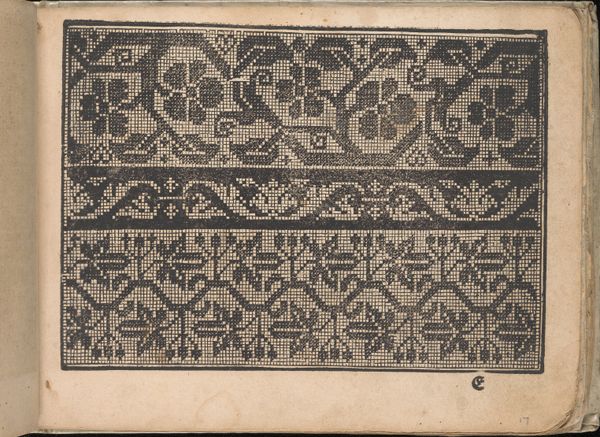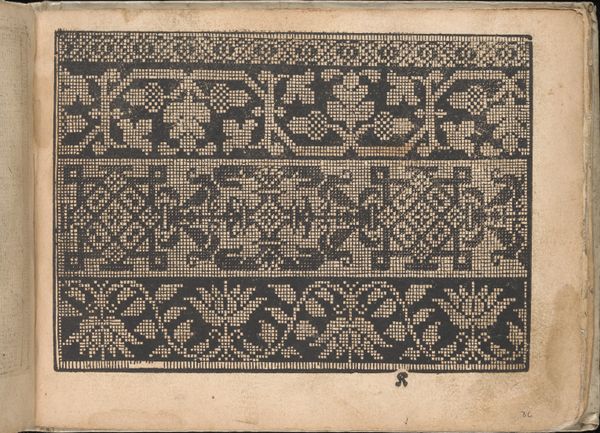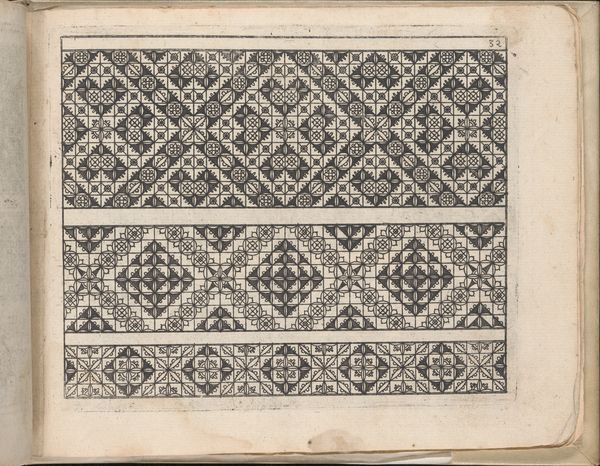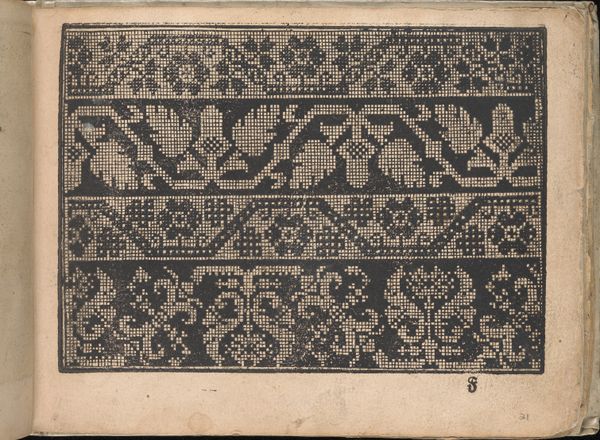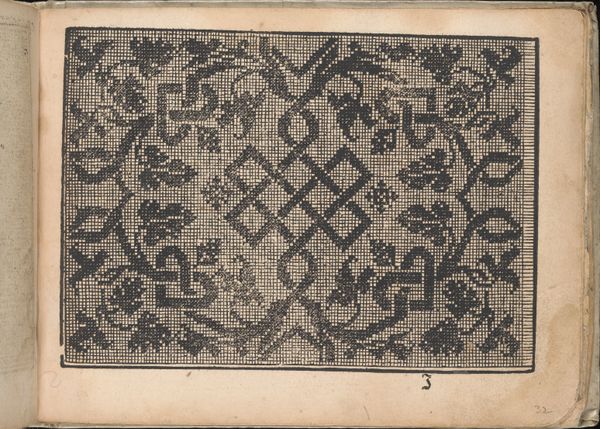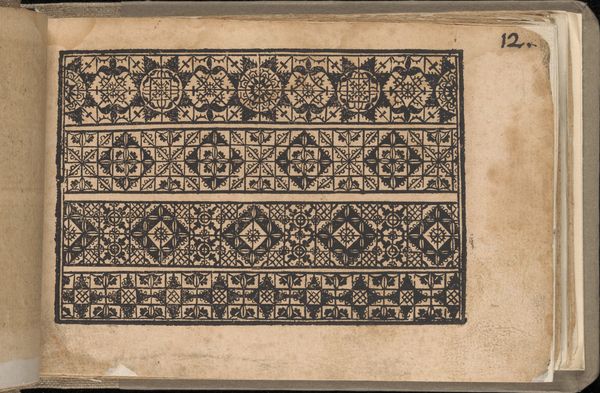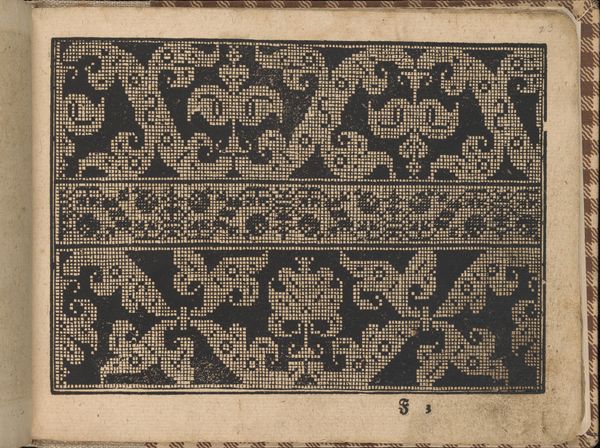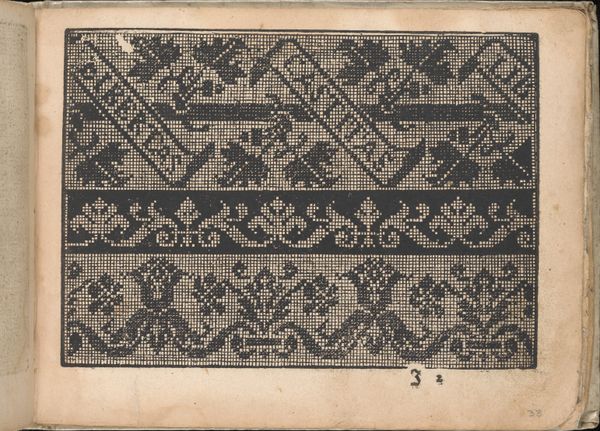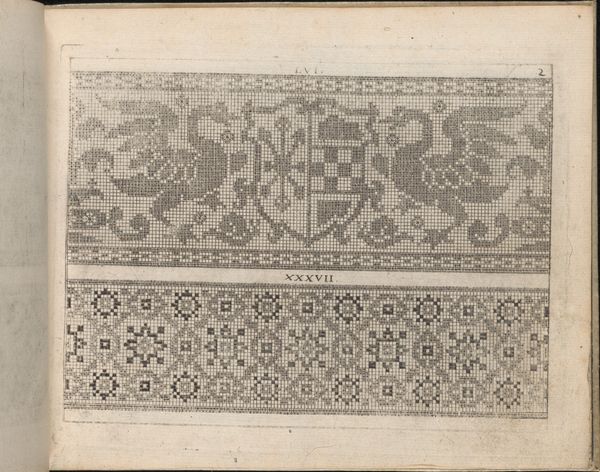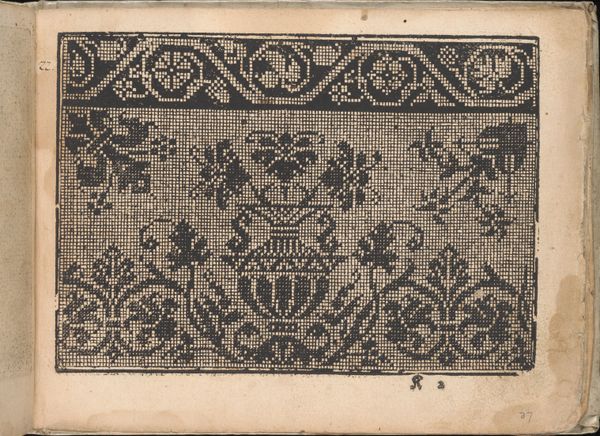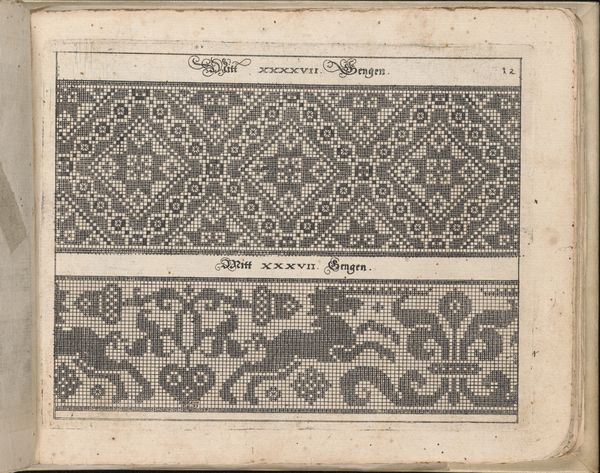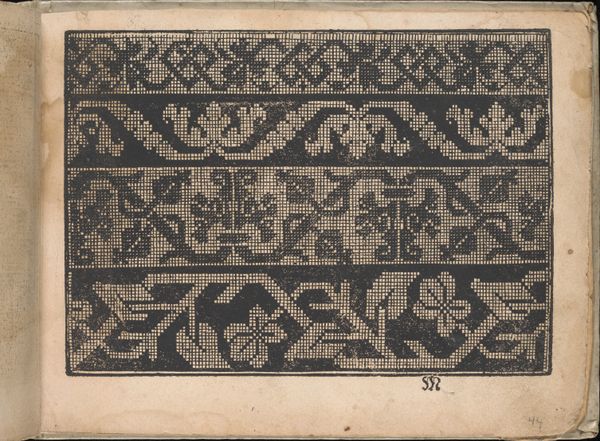
drawing, graphic-art, ornament, print, woodcut
#
drawing
#
graphic-art
#
ornament
# print
#
11_renaissance
#
folk-art
#
geometric
#
woodcut
Dimensions: Overall: 6 1/8 x 7 7/8 in. (15.5 x 20 cm)
Copyright: Public Domain
Editor: So, here we have a page from "Neu künstlich Modelbuch" created in 1598 by Bernhard Jobin. It's a woodcut, a graphic print of patterns. It reminds me of very intricate needlepoint, almost like a sampler. What stands out to you about this page? Curator: It’s fascinating how these "model books" blurred the lines between art and craft. Jobin’s woodcut wasn't necessarily intended as a standalone piece of fine art. Rather, it served a practical purpose: as a pattern for embroidery or other needlework, connecting to the textile industry. Consider the labor involved: the woodcutter, the designer, the eventual embroiderer. Editor: I see what you mean! So, this book was mass-produced so people could reproduce these patterns, driving some degree of standardization of textile patterns? Curator: Exactly. We can consider how such images and materials affected local economies. What kind of cloth would they have used? Were the dyes locally sourced? The replication via woodcut facilitated a spread of style, while at the same time creating localized material expression through fabric and thread choice. Editor: That's interesting. I was focusing on the geometry and repeating floral motifs. Curator: Well, don’t discount that! But the 'geometric' and 'floral' exists within this matrix of making. It raises questions of gendered labor as well – who was actually *using* this pattern book, and under what circumstances? Editor: I hadn't thought about that. So, it’s less about the aesthetics and more about the entire production line of design and textile availability and accessibility. It sounds like something we’d call “open source” today, making the means of production visible and available to the consumer. Curator: Precisely. The materiality and accessibility open doors for critical inquiry into consumerism and access, as well as questions of labor and how early modern artwork was intrinsically tied to making things!
Comments
No comments
Be the first to comment and join the conversation on the ultimate creative platform.
